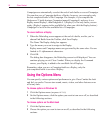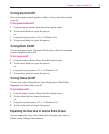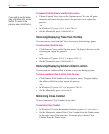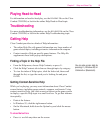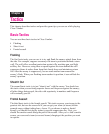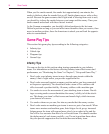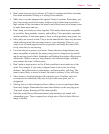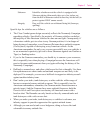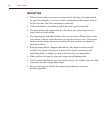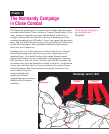
60
Close Combat
Vehicle Tips
You can use the tips in this section when issuing commands to your vehicle
teams. For information on the factors affecting vehicle effectiveness and perfor-
mance, the following table may prove useful.
Attribute Description
Armor The strength and thickness of the armor is rated in eight
horizontal angles and three vertical angles, in addition to
the top and bottom armor. The slope of the armor is
factored into calculation of armor effectiveness. The
vehicle is rated for both the hull and turret armor (if the
vehicle has one). In addition, the passengers and crew are
given protection values based on the type of vehicle (open
top, open rear, unarmored).
Gun Each vehicle can support up to three weapons on both the
hull and the turret. Each of the guns is fired independently
by the vehicular crew.
Fire-Angle Each gun on the vehicle is rated for what angle the gun can
fire at (360 degrees, 180 degrees, 90 degrees, and so on).
Fire outside of that arc will cause the soldier firing that
gun to rotate the hull or turret as necessary in order to fire.
Exposed Each gun is denoted as to whether or not the soldier must
be exposed in order to fire that particular weapon. Being
exposed makes the soldier much more vulnerable to
enemy fire.
Rotation rates The speeds with which the hull and turret can rotate.
Mount type Whether the mount exists, is a fixed mount, or can rotate.
A mount is either the hull or turret.
Mount hit Chance of the hull versus the turret being hit.
Acceleration Rate at which the vehicle accelerates.
Max speed Top off-road speed of the vehicle.
Move type How the vehicle moves (tracked, wheeled, and so on)
Size Profile given the enemy; affects ease of being hit.
Gyrostabilizer Identifies whether or not the vehicle is equipped with a
gyrostabilized gun. A gyrostabilizer improves main gun
accuracy when the vehicle is on the move.



